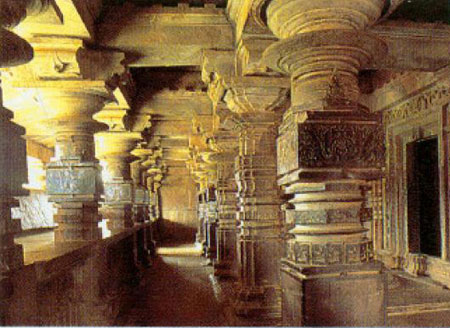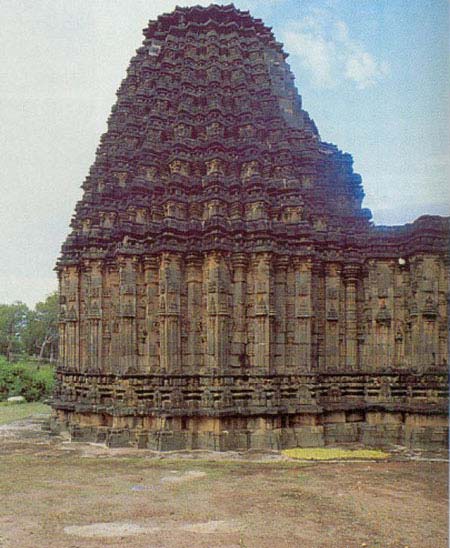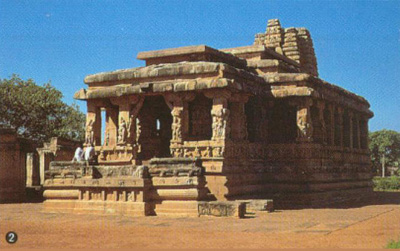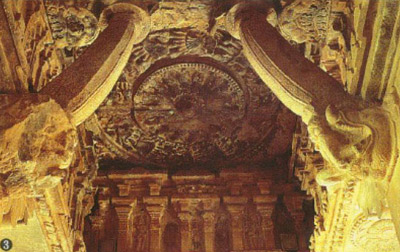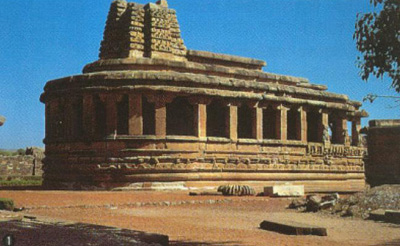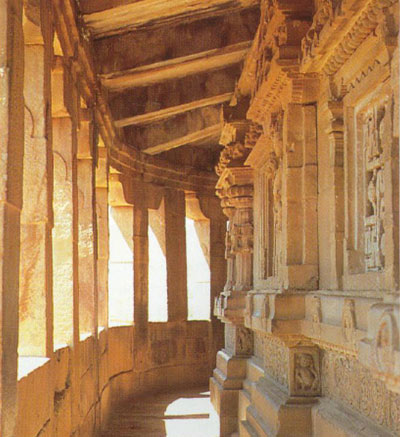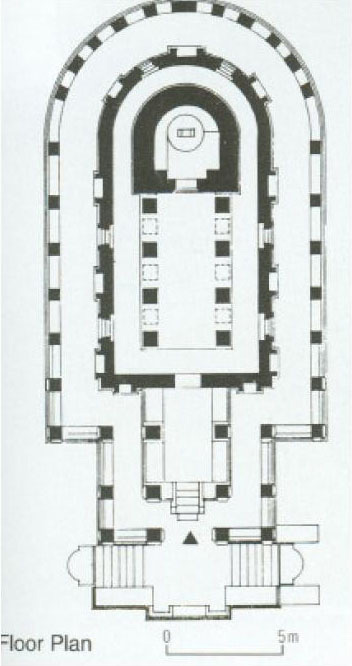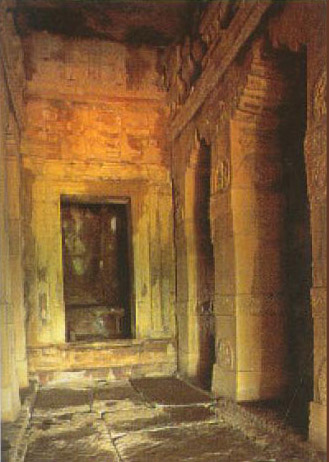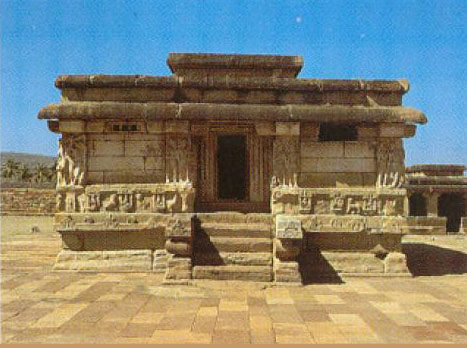Aihole
Aihole |
About: |
| Once the capital of the early Chalukyan dynasty (6th to 8th centuries), Aihole is a picturesque village on the banks of the Malaprabha river. Variously called Ayyavole & Aryapura in the inscriptions, Aihole is historically famous as the cradle of Hindu temple architecture. There are about 125 temples divided into 22 groups scattered all over the villages and nearby fields. Most of these temples were built between the 6th & 8th centuries and some even earlier
Only mere traces of a fort dating from the 6th century can be seen today. A large number of prehistoric sites have been found in Morera Angadigalu, near the Meguti hillocks in Aihole. Excavations near some temples have yielded traces of antique pottery and bases of structures constructed with bricks of pre-Chalukyan times. More temples are being excavated every day bearing witness to the vigorous experimentation on temple architecture which went on at Aihole more than 14 centuries ago. |
Location info: |
| Address:A tranquil village, located on the banks of the Malaprabha River, Aihole is known as the cradle of Hindu temple architecture. It is situated at a height of around 590 mt. and about 480 km from Bangalore. |
| District:Bangalore |
| Nearest City:Pattadakal |
| Best time to visit: October to February . Summers tend to be very hot. |
Climate/Weather of Aihole: |
| Area - 4 sq. Kms. Altitude - 593 meter Temperature - Rainfall 58.4 cms |
History of Aihole: |
| A tranquil village, located on the banks of the Malaprabha River, Aihole is known as the cradle of Hindu temple architecture. It is situated at a height of around 590 mt. and about 480 km from Bangalore. Aihole was the first capital of the Chalukya kings and was built around the 4th-7th century. There are hundreds of temples in the villages and fields nearby. It is said that here, within a one km circumference, there are 125 temples and the most impressive one is the Durga Temple. The first phase of temple building in Aihole dates back to the 6th century AD, while the second phase extends up to the 12th century AD.
Aihole, Badami and Pattadakal near Bijapur in Karnataka are centers of Early Chalukyan art. Badami is located at a distance of about 500 km from Bangalore, the capital of Karnataka and is well connected by road. Aihole was the first capital of the early Chalukyas. Aihole is to the west of Badami, along the Malaprabha river, while Pattadakal is to the east. Pulakesi I, one of the greatest rulers of this dynasty, moved the capital to Badami nearby. Badami was then known as Vatapi. The first phase of temple building in Aihole dates back to the 6th century CE, the second phase to the 12th century. |
Interesting things to do: |
| Food Specialities: No specialty restaurants are available at Aihole. Small tea shops serving snacks can be found. Food can be served by the Tourist Homes at Aihole but on advance notice Shopping at Aihole: |
Interesting things to Visit: |
| Durga Temple: The temple derives its name from Durgadagudi meaning 'temple near the fort'. Dedicated to Vishnu, the temple appears to be a Hindu adaptation of the Buddhist chaitya (hall) with its apsidal end. Standing on a high platform with a 'rekhanagara' type of Shikhara, it is the most elaborately decorated monument in Aihole. The columns at the entrance and within the porch are carved with figures and ornamental relief's. The temple appears to be a late 7th or early 8th century construction. Ladh Khan Temple: Meguti Temple: Ravanphadi Cave: Hucchimalli Temple: Gowda Temple: Surayanarayana Temple: Konti Group of Temples: Museum & Art Gallery: |
Mobile range info: |
How to reach Aihole? |
| Nearest Railway Station:The nearest railway station is Badami. |
| Nearest Airport:Bangalore |
| Road Transport:Aihole is connected by road to : • Pattadakal (17 kms) • Badamli (46 kms) • Bangalore (483 kms) |
Nearest Visiting places in Aihole: |
Nearest Petrol Pump: |
| Pattadakal |
Hotels/Lodge/Accommodation nearby Aihole: |
| ★ Tourist Rest House Aihole, Hungund Taluk Ph: +91-8352-41 ★ Tourist Rest Houses of Tourism Department |
Things to carry: |
| Clothing - Summer - Light Cottons Winters - Light Woolens |
Tips & Suggestions: |
| Local Transport: Cycle Rickshaws, Bus Service |
Help Line/Phone Number: |
| Police Station:Pattadakal |
| Nearest Hospital:Pattadakal |
| Society/Community Phone Number |
Aihole Nearest Attraction |
| Badami Historical |
| Badami, formerly known as Vatapi, is a taluk in the Bagalkot District of Karnataka, India. It was the regal capital of the Badami Chalukyas from 540 to 757 AD. It is famous for rock cut and other structural temples.....more |
| Pattadakal Historical |
| Pattadakal: Situated on the left bank of the Malaprabha River, Pattadakkal is a World Heritage Centre. The town has 10 major temples representing early Chalukyan architecture. Located on the banks of the river Malaprabha, Pattadakal is the capital of the Chalukya rulers.....more |

